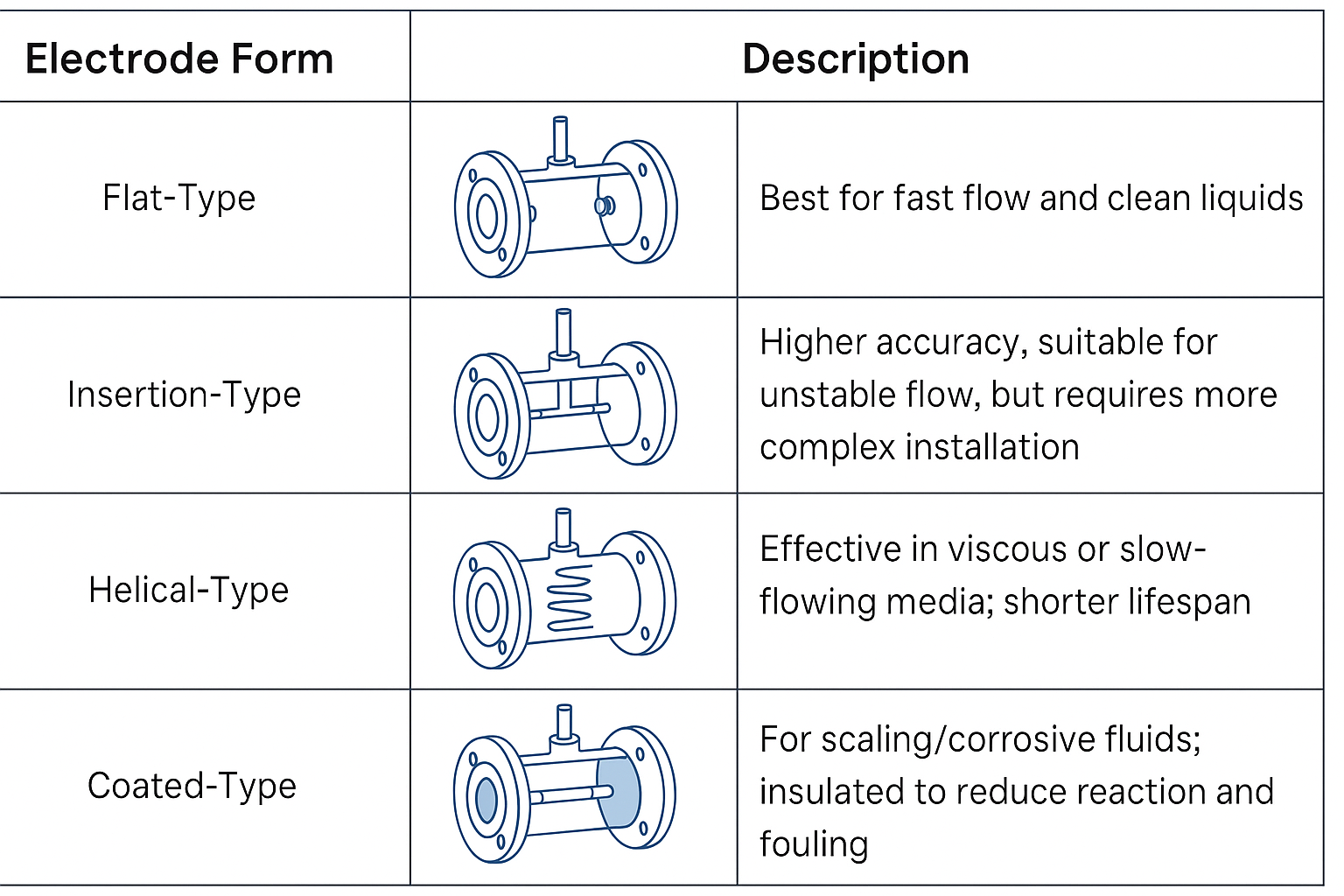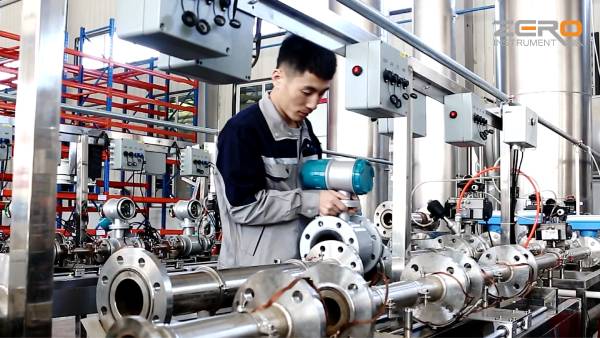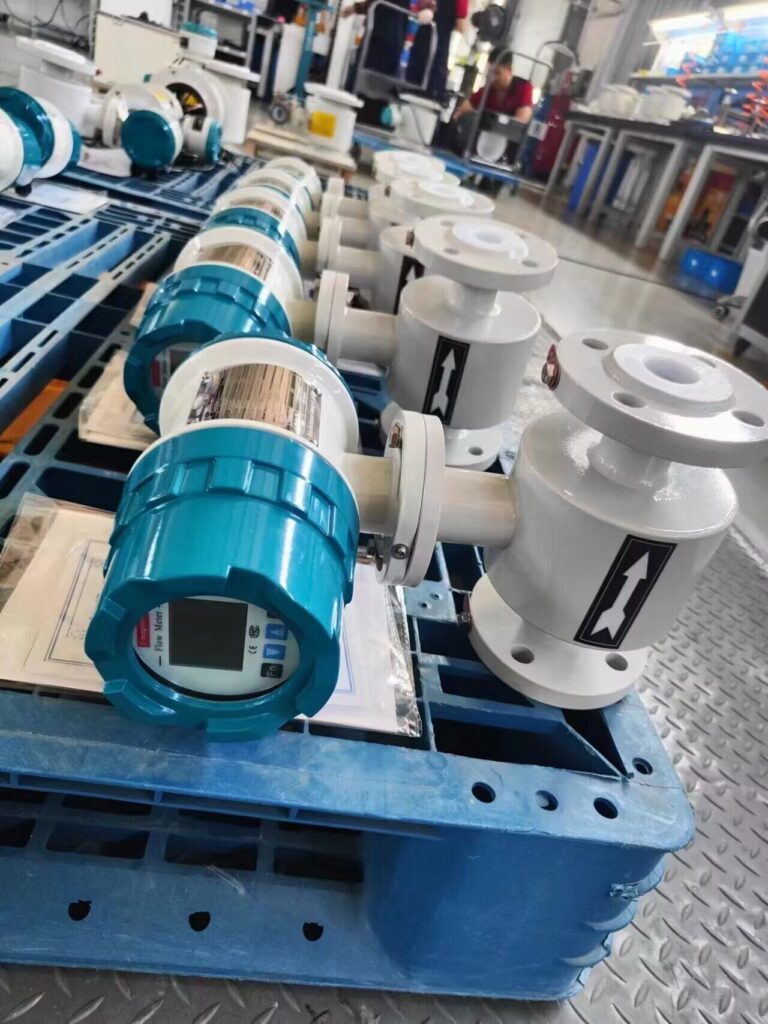Electrode material selection is a critical step in ensuring accurate and reliable operation of an electromagnetic flowmeter. The optimal choice depends on the characteristics of the process fluid, application requirements, cost constraints, and structural configuration. This guide outlines the key factors to consider and provides practical recommendations.
1. Fluid Characteristics
1.1 Corrosiveness
316L Stainless Steel: Suitable for potable water, industrial water, sewage, and weak organic acids.
Titanium: Ideal for seawater, chlorides, hypochlorites, and other oxidizing agents.
Platinum / Tantalum: Required for highly corrosive media such as concentrated hydrochloric acid, sulfuric acid, and strong alkalis.
1.2 Abrasiveness
Tungsten Carbide-Coated Electrodes: Recommended for slurry, pulp, and other solids-laden fluids.
Standard Stainless Steel: Adequate for most low-abrasion chemicals and clean water.
1.3 Temperature Resistance
Platinum-Iridium or Platinum-Tungsten Alloys: Suitable for hot water and steam applications.
Common Materials (e.g., SS316L, Ti, Hastelloy): Can withstand normal ambient temperatures.
1.4 Electrical Conductivity
Low Conductivity Media (e.g., ultrapure water): Require high-sensitivity materials like SS316L or Hastelloy.
High Conductivity Media: Material selection depends more on chemical compatibility and mechanical durability.

2. Process and Industry Requirements
2.1 Sanitary Applications
In the food and pharmaceutical sectors, electrode materials must be hygienic, non-toxic, and corrosion-resistant. Stainless steel and titanium are typically preferred.
2.2 Electrochemical Reactions
Certain chemicals (e.g., hydrogen peroxide) may react with specific metals like platinum. Select materials that avoid unintended redox interactions.
3. Cost and Performance Considerations
Budget: Stainless steel and Hastelloy offer good performance at a reasonable cost.
High-Performance Needs: Platinum and tantalum provide superior resistance but are significantly more expensive.
Value for Money: Titanium balances corrosion resistance and cost, making it a high-value option for many applications.

4. Installation and Design Factors
4.1 Installation Environment
In cases where significant ground potential differences exist, a three-electrode configuration may be needed. Electrode materials must be compatible with the grounding method.
4.2 Sensor Structure Compatibility
Self-cleaning or anti-fouling designs: Electrode materials must resist both chemical and physical wear from cleaning agents or mechanical brushing.
5. Summary of Common Electrode Materials
| Material | Key Features & Applications |
|---|---|
| 316L Stainless Steel | General-purpose for weak acids, sewage, and clean water |
| Titanium | Excellent for seawater, chlorides, and oxidizing acids |
| Hastelloy B | Resistant to non-oxidizing acids (H₂SO₄, HF, phosphoric acid) |
| Hastelloy C | Suitable for oxidizing acids (HNO₃), salts, seawater, and mixed acids |
| Tantalum | Chemically inert to almost all fluids except HF and strong bases |
| Platinum | Universal corrosion resistance (not recommended for aqua regia) |
| SS + Tungsten Carbide | For non-corrosive but abrasive fluids like slurry and pulp |

6. Electrode Form and Configuration
6.1 Electrode Forms
Flat-Type: Best for fast flow and clean liquids.
Insertion-Type: Higher accuracy, suitable for unstable flow, but requires more complex installation.
Helical-Type: Effective in viscous or slow-flowing media; shorter lifespan.
Coated-Type: For scaling/corrosive fluids; insulated to reduce reaction and fouling.
6.2 Electrode Configurations
Two-Electrode: Basic design for standard measurement.
Three-Electrode: Adds a grounding electrode to eliminate potential interference.
Multi-Electrode: Used in large-diameter or high-precision systems for improved accuracy and stability.

Conclusion
Selecting the correct electrode material for an electromagnetic flowmeter is not a one-size-fits-all decision. It requires a detailed understanding of the fluid’s chemical and physical properties, as well as consideration of installation environment, industry-specific standards, and budget constraints. A well-chosen electrode not only enhances accuracy and durability but also minimizes long-term maintenance and replacement costs.
